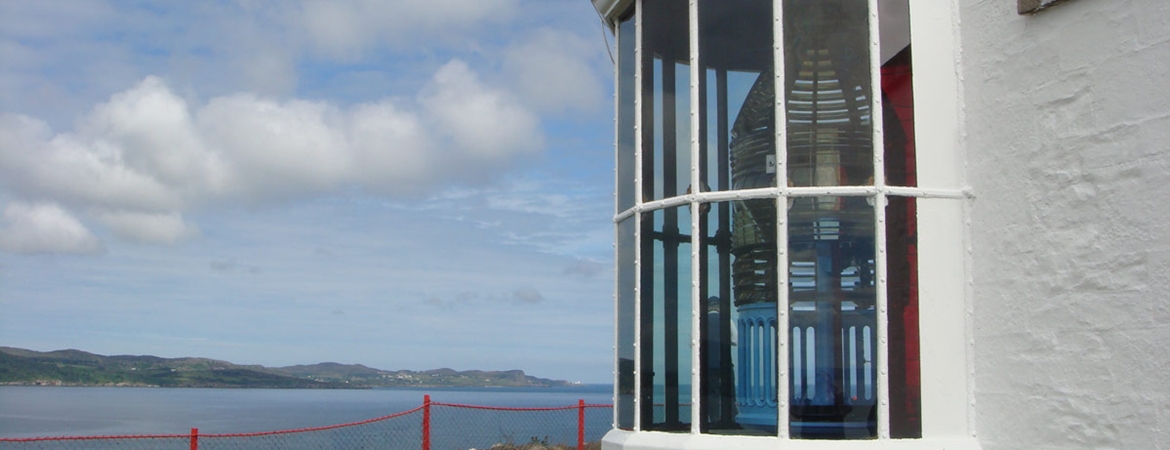The only lighthouse in the immediate vicinity of Lough Swilly was Fanad Head established on 17th March 1817, but in March 1871 the Duke of Abercorn, backed up numerous signatories in a memorial to the Commissioners, looked for better lighting in the Lough and suggested converting the two Martello towers at Macanish and Dunree. The Government later in the year said they had no intention of disposing of the towers. During 1872 Trinity House came over to investigate and they agreed that lights should be established at Dunree Head and on Buncrana Pier. The Board of Trade also concurred with Trinity House.
The Inspecting Committee surveyed the site and reported that the Fort at Dunree was not a suitable position for the new lighthouse but suggested a position on higher ground to the north, in which case the tower would not have to be more than one storey high.
Work went ahead and a lantern attached to a dwelling for the Keeper was designed and built and the light was established on 15th January 1876. Mr John Kennedy was the Keeper in Charge. The light was fixed, that is non flashing with a two wick burner using oil in a 500mm diameter lens.
The lantern is at ground level attached to and in front of the dwelling. The light is 46m above high water sea level. The dwelling and lantern were built by Messrs McClelland & Co. of Derry. The optic supplied by Chance Brothers of Birmingham.
The character of the light is Flashing (2) WR 5 seconds. Its range is 12 miles white and 9 miles red. Its intensity is 5,000 candelas white and 1,200 candelas red. The height of the structure is 6 metres.
On 9th December 1927 the light was converted to unwatched acetylene with a carbide generating plant attached to the station. A group of seven acetylene burners replaced the wick lamp and the fixed light became flashing with two flashes every five seconds. By virtue of the light being made unwatched meant that the keeper no longer had to keep a night watch. The keeper, J. Murphy, was pensioned and became the Attendant. The light had another conversion this time to electric in 1969. The source of illumination being a cluster of 100 watt, 220 Volt lamps. If the ESB should fail then a small electric alternator automatically takes over until the mains supply has been restored.
M. P. L. Costeloe March 1976. Revised April 1983.
Dunree Lighthouse
|
Position: |
55°11.888' North 07°33.250' West |
Aids to Navigation |
|
|
Sectors: |
R320°-328° (8°), W328°-183° (215°), R183°-196° (13°) |
|
Height of Tower: |
6 metres |
|
Height of Light MHWS: |
46 metres |
|
Character: |
Fl (2) WR 5s |
|
Range: |
W 12 nautical miles, R 9 nautical miles |
|
Radar Beacon: |
|
|
AIS: |
|
Tags :
lighthouse
,
Dunree



